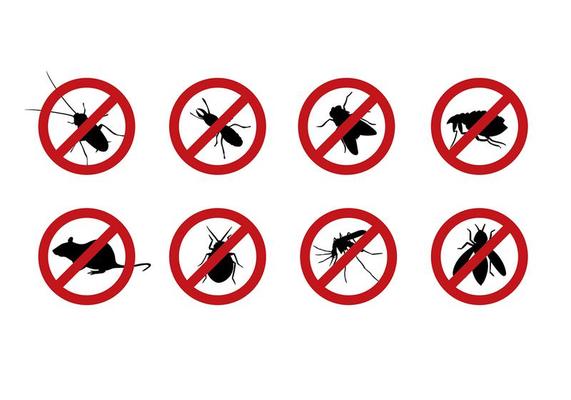Relied On A1 Exterminator Charlotte NC - Comprehensive Pest Solutions
Wiki Article
Bed Bug Therapy Failure: Comparing Chemical Vs. Non-Chemical Solutions
In the world of pest control, particularly when managing the persistent issue of bed insects, the choice in between chemical and non-chemical treatment remedies can be a critical one. Both approaches supply distinctive advantages and drawbacks, influencing factors such as efficiency, safety and security considerations, and general expense. By checking out the nuanced information of each technique, a more clear understanding of which course to seek in attending to a bed bug infestation can be attained.Performance of Chemical Treatments
Chemical treatments for bed bug problems have been extensively recognized for their quick and powerful efficiency in eliminating these insects. When thinking about the efficiency of chemical treatments, it is important to understand that they can provide a fast and detailed solution to a bed pest problem.Additionally, chemical treatments have the advantage of offering recurring effects, implying that they can continue to get rid of bed insects even after the initial application. This recurring action is especially valuable in combating any kind of potential re-infestations. Furthermore, the rapid action of chemical treatments can bring alleviation to individuals dealing with severe bed pest invasions, permitting them to gain back control of their home promptly.
Safety Interest In Chemical Solutions
When utilizing chemical remedies for bed bug treatment is guaranteeing the security of passengers and the environment,One critical aspect that requires mindful factor to consider. While chemical treatments can be efficient in removing bed insects, they may posture threats otherwise handled properly. Among the key safety concerns with chemical solutions is the potential injury they can trigger to human health and wellness. Exposure to certain chemicals made use of in bed pest therapies can bring about respiratory system problems, skin inflammation, or other negative reactions, especially in individuals with pre-existing problems or sensitivities. Additionally, inappropriate application or dose of chemical pesticides can lead to harmful deposits lingering in the cured location, positioning long-lasting wellness dangers to passengers.Moreover, the ecological impact of chemical options is another significant consideration. Some pesticides made use of in bed bug therapies might be harmful to useful bugs, wild animals, and environments if they seep into the soil or water systems. It is vital to utilize chemical therapies carefully, adhering to safety guidelines, and thinking about less poisonous options to mitigate these threats and ensure the effective and secure administration of bed bug infestations.
Advantages of Non-Chemical Approaches
Taking into consideration the prospective security issues and environmental influence connected with chemical services for bed bug therapy, checking out non-chemical approaches presents a promising alternative with several distinctive benefits. Non-chemical treatments are environmentally pleasant, as they do not add to air or water air pollution, making them a sustainable option for bug control.Furthermore, non-chemical remedies can be reliable in targeting bed insects, including hard-to-reach locations where chemical therapies may not permeate. Methods such as heat treatment, vacuuming, steam cleaning, and bed mattress encasements provide detailed eradication without making use of dangerous chemicals. Furthermore, non-chemical approaches can be much less disruptive, needing minimal preparation and enabling quicker reentry right into treated areas. In general, going with non-chemical bed insect therapy methods not just focuses on safety and environmental protection but additionally makes sure effective and thorough pest control.
Limitations of Non-Chemical Treatments

Furthermore, non-chemical therapies typically need multiple applications to accomplish effective elimination. why not try here This can be time-consuming and might not always assure complete elimination of all bed insects and their eggs, particularly in hard-to-reach or concealed locations.
In addition, the success of non-chemical therapies greatly counts on correct implementation and thoroughness, which can be testing for people without specialist expertise. Insufficient application of non-chemical techniques might result in insufficient obliteration, resulting in consistent problems and the demand for additional treatments.
As a result, while non-chemical therapies have their advantages, it is necessary to acknowledge these restrictions and consider them when establishing one of the most effective technique for managing bed bug infestations.
Cost Comparison: Chemical Vs. Non-Chemical Options
Provided the restrictions connected with non-chemical treatments, a necessary element to examine in the context of bed insect administration is the expense contrast between chemical and non-chemical choices. In comparison, non-chemical therapies like warm treatment or steam can be extra costly, with prices ranging from $1,000 to $6,000 for a whole home. While the initial price of chemical treatments may appear reduced, several click for more info therapies may be needed to totally eliminate the infestation, possibly enhancing the overall price.Final Thought

Considering the prospective safety and security concerns and ecological impact connected with chemical solutions for bed insect therapy, exploring non-chemical approaches provides an appealing choice with several unique benefits.Offered the constraints linked with non-chemical therapies, an important facet to evaluate in the context of bed insect administration is the price comparison between chemical and non-chemical options. In comparison, non-chemical therapies like warmth treatment or heavy steam can be extra expensive, with costs ranging from $1,000 to $6,000 for an entire home. While the initial cost of chemical treatments look at these guys may seem lower, several treatments might be called for to totally eradicate the invasion, possibly raising the total cost.In conclusion, when contrasting chemical and non-chemical bed pest therapy options, it is essential to think about efficiency, security, benefits, constraints, and expense.
Report this wiki page